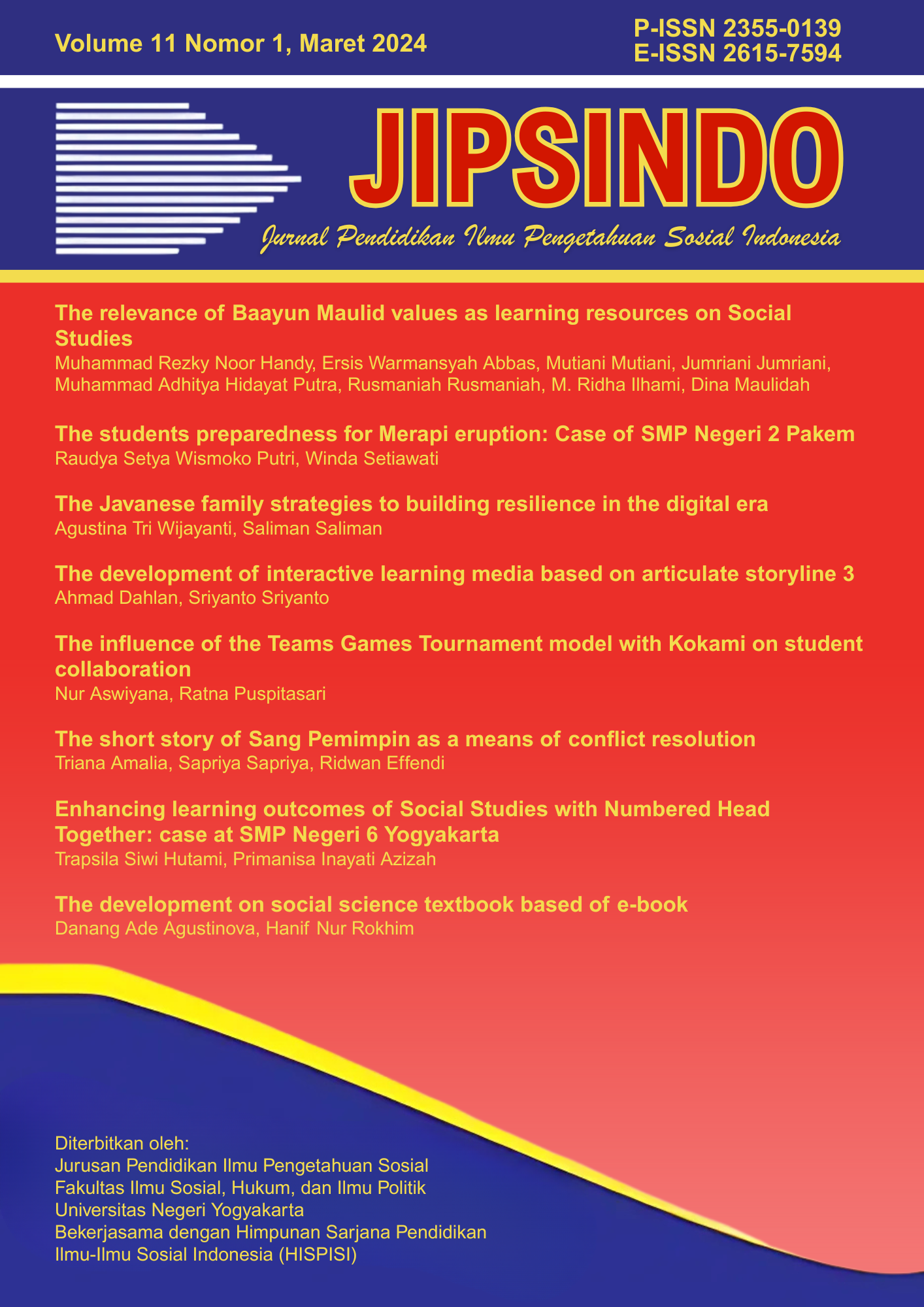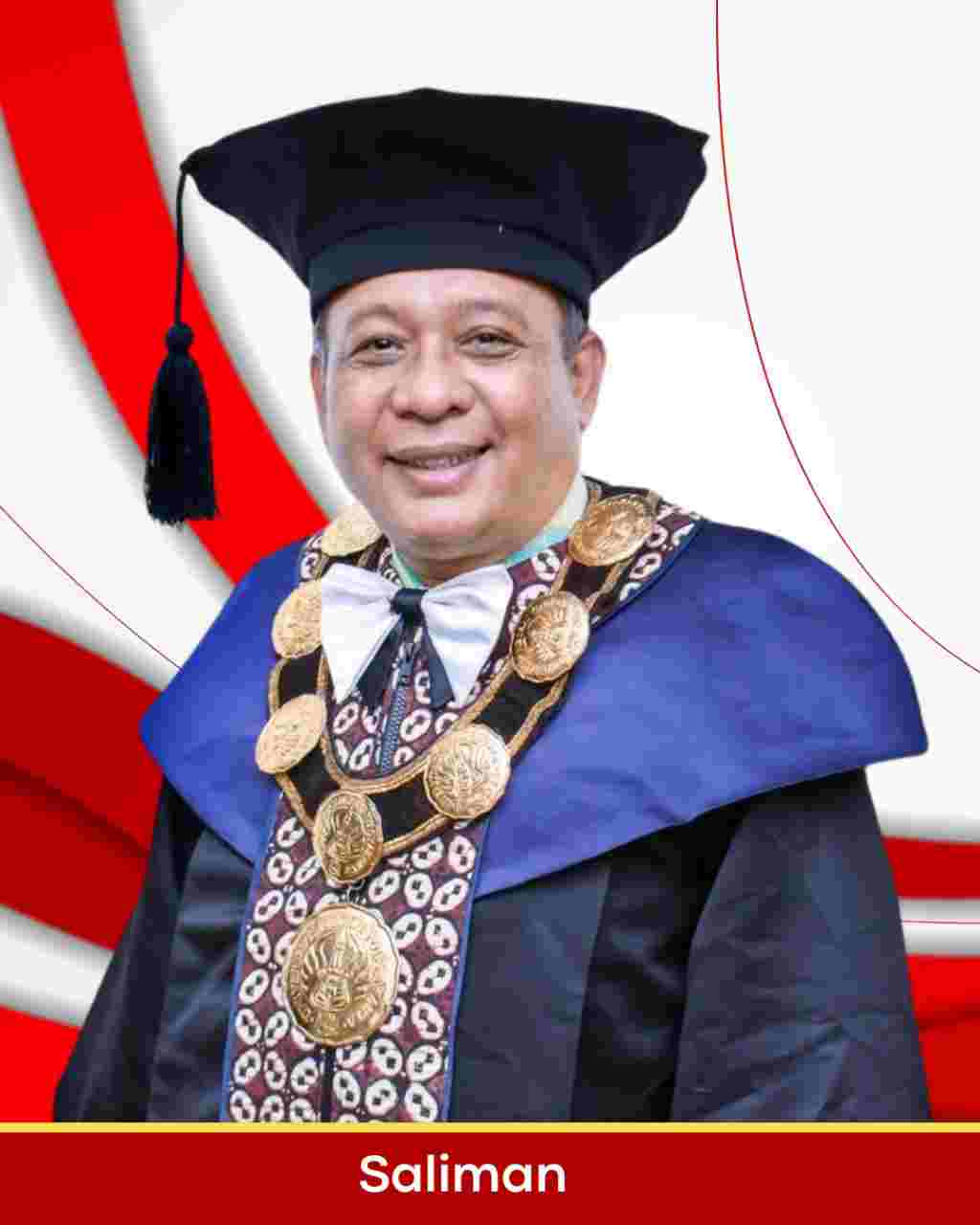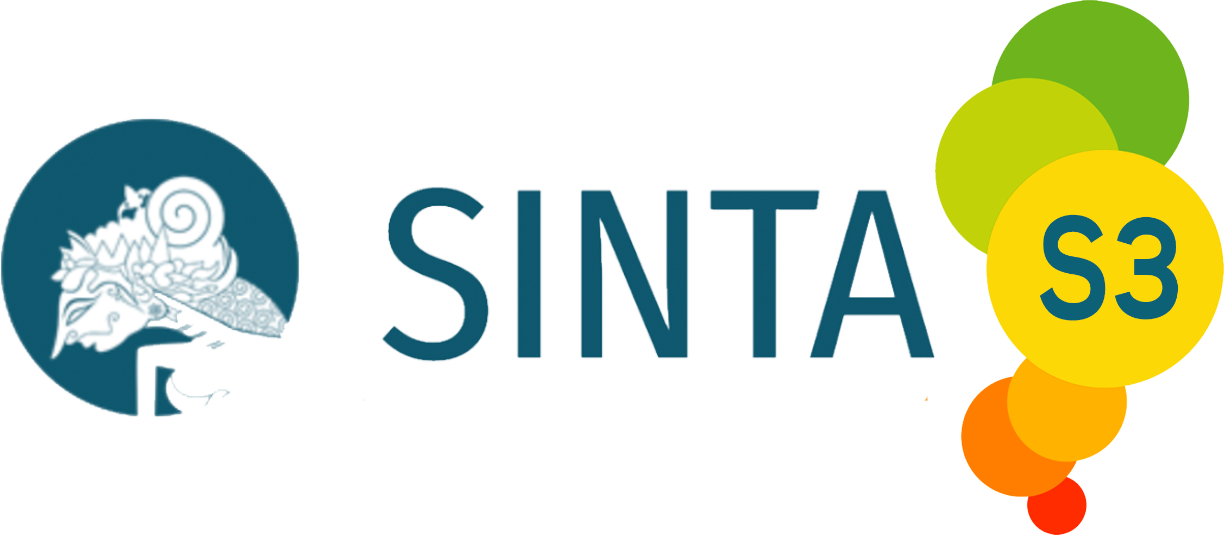KAIN TENUN IKAT SEBAGAI MEDIA PEMBELAJARAN IPS DI SEKOLAH DASAR
DOI:
https://doi.org/10.21831/jipsindo.v7i1.30845Keywords:
Kain tenun ikat, Media pembelajaran, Social studies, Sekolah DasarAbstract
Kain tenun ikat merupakan warisan budaya, Sumba yang memiliki motif beragam serta memiliki nilai-nilai budaya sehingga urgen untuk dilakukan penelitian. Penelitian ini bertujuan, 1) Mengidentifikasi fauna dan flora pada motif kain tenun Sumba Timur sebagai media belajar Ilmu Pengetahuan Sosial (IPS) di Sekolah Dasar (SD). Penelitian ini termasuk jenis penelitian kualitatif deskriptif. Hasil penelitian ditemukan 1) Bahwa pada motif kain ikat Sumba Timur terdapat motif fauna dan flora yang ada disekitar masyarakat. 2) Motif kain ikat Sumba Timur mengambarkan hasil pemikiran, pengalaman, pandangan hidup, ataupun benda-benda yang ada di sekitar para penenun. Dengan motif yang bercorak fauna dan flora dapat dijadikan sebagai media pembelajaran yang kontektual dalam mengajarkan materi fauna dan flora pada matapelajaran Ilmu Pengetahuan Sosial di Sekolah.
WOVEN CLOTH AS A SOCIAL STUDIES LEARNING MEDIA IN PRIMARY SCHOOLS IN SUMBA
The woven cloth is a cultural heritage, Sumba which has various motifs and has cultural values so it is urgent to do research. This study aims, 1) To identify the fauna and flora on the woven fabric motifs of East Sumba as a medium for learning Social Sciences (IPS) in Elementary Schools (SD). This research is descriptive qualitative research. The results of the study were found 1) That the motifs of the cloth of East Sumba were found in the motifs of fauna and flora around the community. 2) The motif of the Ikat cloth in East Sumba depicts the results of thoughts, experiences, views of life, or objects around the weavers. With motifs that are fauna and flora patterns, it can be used as a contextual learning medium in teaching material on fauna and flora in Social Sciences subjects in schools.
References
Alwasilah, Suryadi, & Karyono. (2009). Etnopedagogi: Landasan praktek dan pendidikan guru. Bandung : PT Kiblat Buku Utama.
Apa pengertian dari pakaian adat. Dari https://brainly.co.id/tugas/32327. diakses 14 Februari 2020
Bili., F. M.; Sujadi. A., & Arigiyati. T.A. (2019). Identifikasi etno-matematika pada motif kain tenun Sumba Barat Daya. UNION: Jurnal Pendidikan Matematika. 7, (1), 115-124.
Burger, H. G. (1968). Ethno-pedagogy: A manual in cultural sensitivity with techniques for improving cross teaching by fitting ethnic patterns. New Mexico: Soouthwestern Cooperative Educational Laboratory INC.
Depdikbud. (1990). Pakaian adat tradisonal daerah Propinsi Nusa Tenggara Timur. Jakarta: Depertemen P dan K
Fanpula, T, S. (2014). Penjelasan Pasal 32 UUD 1945 dari https://www.limc4u.com/blog/penjelasan-pasal-32-uud-1945-3/ diakses 14 Februari 2020
Hebi, F. (2014). Motif dan makna pada kain ikat Sumba Timur. Tersedia pada laman: maxfmwaingapu.com/2014/11/semiotik-motif-dan-makna-pada-kain-ikat-sumba-timur/ diakses 11 Desember 2019
Mamulak, N. R. (2015). Rancang bangun sitem informasi motif-motif tenunan daerah Nusa Tenggara Timur menggunakan pendekatan unified proces. Proceeding Seminar Nasional Teknologi Informasi dan Komunikasi 2015 (SENTIKA 2015) ISSN: 2089-9815 Yogyakarta, 28 Maret 2015.
Ndima, P. P. (2007). Kajian budaya kain tenun ikat Sumba Timur. Salatiga: Nuansa Sukses.
Pakaian adat dari https://id.wikipedia.org/wiki/Pakaian_adat. diakses 14 Februari 2020.
Pingge, H. D. (2017). Kearifan lokal dan penerapannya di sekolah. Jurnal Edukasi Sumba, 1, (2), 28-136.
Pingge, H.D. (2019). Learning materials based on local wisdom of Sumbanese as the source of learning in elementary school. Proceedings the 4th International Seminar on Social Studies and History Education (ISSSHE). Bandung: UPI
Sari, R.N. (2018). Batik Gedhog desa Kedungrejo, Tuban, sebagai sumber belajar berbasis etnopedagogi di sekolah dasar. JPGSD, 06 (10 ), 1769-1780.
Soelarto, B. (1979) Budaya Sumba. Jakarta: Proyek Pengembangan Media Kebudayaan DITJEN Kebudayaan Departemen P & K Republik Indonesia.
Spradley, P.J. (2007). Metode etnografi. Yogyakarta: Tiara Wacana.
Sudrajat, (2014) Pendidikan multikultural untuk meningkatkan kualitas pembelajaran IPS di sekolah dasar, JIPSINDO, 1, (1), 1-19.
Sudrajat, Wulandari, T; & Wijayanti, A.T. (2015). Muatan nilai karakter melalui permainan tradisional di PAUD Amongsiwi, Panggungharjo, Sewon, Bantul, JIPSINDO, 2, (1), 44-65.
Sugiyono. (2009). Metode Penelitian Pendidikan. Bandung: Penerbit Alfabeta.
Supardi, Widiastuti, A., & Saliman (2015) Pengembangan media pembelajaran IPS Terpadu berbasis Audio-visual. JIPSINDO, 2, (1), 1-21.
Downloads
Published
How to Cite
Issue
Section
License
Authors who publish with this journal agree to the following terms:
- Authors retain copyright and grant the journal right of first publication with the work simultaneously licensed under a Creative Commons Attribution License that allows others to share the work with an acknowledgement of the work's authorship and initial publication in this journal.
- Authors are able to enter into separate, additional contractual arrangements for the non-exclusive distribution of the journal's published version of the work (e.g., post it to an institutional repository or publish it in a book), with an acknowledgement of its initial publication in this journal.
- Authors are permitted and encouraged to post their work online (e.g., in institutional repositories or on their website) prior to and during the submission process, as it can lead to productive exchanges, as well as earlier and greater citation of published work (See The Effect of Open Access).

JIPSINDO (Jurnal Pendidikan Ilmu Pengetahuan Sosial Indonesia) is licensed under a Creative Commons Attribution-ShareAlike 4.0 International License.
Based on a work at https://journal.uny.ac.id/index.php/jipsindo.













